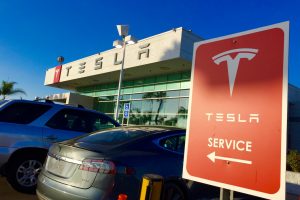- 🏭 Tesla has increased wages for workers at its Gigafactory Berlin without union pressure.
- 📉 Volkswagen, facing closures and job cuts, contrasts Tesla’s growth at Gigafactory Berlin.
- 🗣️ Union IG Metall has criticized Tesla for work conditions but was not involved in the wage increases.
- 🚫 Tesla has a history of conflicts with various unions, including those in Europe and the U.S.
- 📈 Tesla converted 500 temporary jobs to permanent roles, strengthening its workforce and economic stance.
In the rapidly evolving landscape of the automotive industry, Tesla continues to spearhead change and innovation, not only through its cutting-edge products but also via its dynamic approach to workforce management. Recent developments at Tesla’s Gigafactory Berlin demonstrate the company’s commitment to growth, even as it circumvents traditional union involvement to enhance its employees’ welfare. Let’s delve into what these changes mean for Tesla and the broader automotive sector.
Renegotiating Employment Norms: Tesla’s Wage Increase Strategy
Tesla’s decision to increase wages at its Gigafactory Berlin, carried out independently of union influence, marks a significant shift in traditional labor-management relations within the German automotive sector. This move could be viewed as an innovative strategy that challenges conventional labor dynamics, potentially setting a new precedent for the industry.
Why the Wage Increase?
- Employee Welfare: With employees at the core of its operations, Tesla recognizes that competitive wages are essential in attracting and retaining a skilled workforce. By offering higher salaries, Tesla not only values its employees but also boosts morale and productivity.
- Strategic Timing: The timing of these wage increases coincides with economic upheavals faced by other major automakers, such as Volkswagen, which is grappling with potential factory closures and job cuts. Tesla’s proactive approach highlights its commitment to sustainability and growth, showcasing its distinctive path in comparison to traditional giants.
- Avoiding Union Pressure: The avoidance of union involvement, specifically bypassing IG Metall, known for its stringent demands, allows Tesla greater flexibility in workforce management. This tactic reflects the company’s desire to maintain control over labor negotiations and respond swiftly to market needs.
The Bigger Picture: Tesla vs. Volkswagen
The contrasting trajectories of Tesla and Volkswagen provide a fascinating case study in strategic management within the automotive industry.
Volkswagen’s Struggles
Volkswagen’s current predicament, involving factory closures and resultant job losses, points to challenges in adapting to current market demands and enhanced competition. The inability to navigate these efficiently could undermine its position and market share.
Tesla’s Growth Trajectory
Conversely, Tesla’s strategic wage increases and conversion of 500 temporary positions to permanent roles underpin its growth ambitions. This approach not only secures its operational foundation but also reinforces its reputation as a forward-thinking leader in the industry.
Navigating Union Dynamics: A Historical Perspective
Tesla’s complex relationship with unions, evident from its various global disputes, reveals much about its corporate philosophy.
Key Union Conflicts
- Germany: The ongoing critique from IG Metall about working conditions at Gigafactory Berlin notwithstanding, Tesla’s ability to increase wages autonomously signals its confidence in negotiating employee relations independently.
- United States and Beyond: Tesla’s historical conflicts with unions like the United Auto Workers (UAW) bring into focus its broader strategy of resisting union control to maintain operational flexibility and productivity.
Conclusion: Tesla’s Path of Innovation
Tesla’s recent actions in Berlin illustrate the company’s knack for challenging the status quo. By eschewing traditional labor frameworks and proactively managing workforce dynamics, Tesla not only enhances its competitive edge but also charts a forward path for others in the industry.
As Tesla continues to disrupt and redefine automotive norms, its approach to workforce management may inspire similar strategies across sectors, ultimately influencing the industry’s future landscape.





